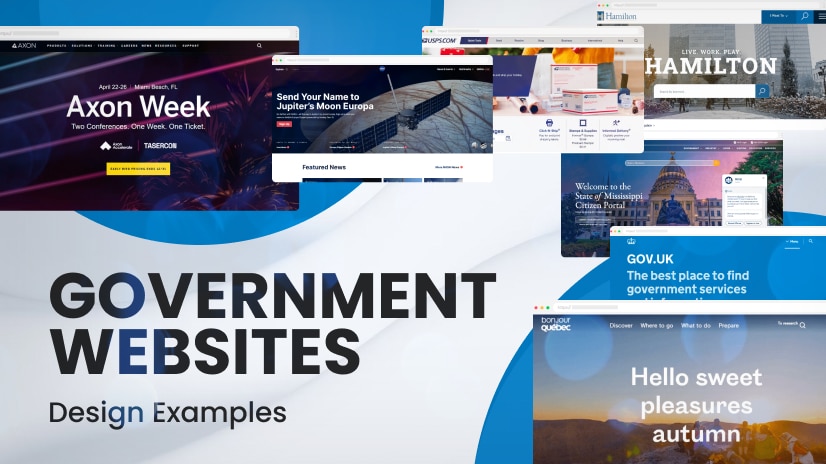10 Crucial Checks Before Your Website Goes Live
Launching a website is a significant milestone for businesses and individuals alike. However, going live without ensuring every aspect of your site is polished and functional can lead to costly errors, poor user experience, and a damaged reputation. A thorough pre-launch checklist can prevent these issues and set your website up for success. In this article, we’ll cover 10 crucial checks to complete before your website goes live.

1. Test Website Functionality
One of the main components of pre-launch preparation is functionality testing. To ensure a smooth user experience, every component on your website should function perfectly.
Check All Links
Broken links irritate users and damage the authority of your website. To find and repair broken links, use programs like Broken Link Checker or Screaming Frog. Make sure external links open in new tabs and internal links take users to the appropriate pages.
Verify Forms
Forms should be properly tested, including contact and subscription forms. Enter different combinations of data to guarantee correct operation, error management, and delivery of submissions to the database or email address specified. For websites in victoria, see here.
Interactive Features
Buttons, sliders, navigation menus, and picture galleries should all function properly. To find and address any issues, test them on various screens and devices.
2. Optimize Website Speed
The speed at which a page loads is important for both SEO and user retention. Users leave websites that take longer than three seconds to load, according to studies.
Compress Images
Large picture files can cause your website to load much more slowly. Reduce file sizes without compromising quality by using compression programs like ImageOptim or TinyPNG.
Enable Caching
To save parts of your website locally on users’ devices, employ browser caching. For repeat visitors, this shortens loading times.
Use a Content Delivery Network (CDN)
By distributing the content of your website among several servers across the globe, a CDN guarantees quicker loading times for users from around the world.
3. Ensure Mobile Responsiveness
In today’s mobile-first world, when mobile devices account for more than half of all web traffic, mobile responsiveness is a must.
Test Across Multiple Devices
To see how your website works on desktops, tablets, and smartphones, use tools like BrowserStack or Google’s Mobile-Friendly Test.
Optimize Navigation
Make sure all touch elements, including buttons and links, are user-friendly on small displays and streamline your mobile navigation menu.
Adjust Text and Images
Make sure the images scale properly to accommodate smaller displays without sacrificing clarity and that the fonts are understandable. https://diversewebsitedesign.com.au/sales-funnel-website-design/
4. Check for Browser Compatibility

Every major browser, including Chrome, Safari, Firefox, Edge, and Opera, must be able to access your website with consistency.
Run Cross-Browser Tests
To model how your website will function across a range of browsers and devices, use tools like LambdaTest or BrowserStack.
Fix Rendering Issues
Keep in mind that different browsers may have varying behavior for interactive features, layouts, and font styles. Modify JavaScript or CSS as needed.
5. Verify Content Accuracy
Credibility and visitor engagement are greatly aided by content. Incomplete or badly written content may discourage consumers from continuing their exploration.
Proofread Every Page
To get rid of typos, grammatical mistakes, and inconsistencies, proofread all written material. The proofreading process can be streamlined with the use of programs like Grammarly.
Check Placeholder Content
Make sure that all placeholder text—like “Lorem Ipsum”—is changed to well-written, completed content. Look for any missing photos, unfinished paragraphs, or draft versions that have been left behind.
Update Legal and Policy Pages
Make sure your disclaimers, terms of service, and privacy policy are correct and abide by local laws and ordinances.
6. Configure SEO Settings
To increase the visibility of your website and draw in organic traffic, search engine optimization, or SEO, is crucial.
Set Meta Tags
Give every page a distinct meta title and description. These brief excerpts contribute to clicks and show up in search engine results.
Use Keywords Strategically
Look up and include pertinent keywords in your headings, URLs, picture alt texts, and content. Steer clear of keyword stuffing, as it can lower your SEO ranking.
Create an XML Sitemap
Create an XML sitemap to aid in the effective crawling and indexing of your website by search engines. Send it to search engines such as Google Search Console.
7. Secure Your Website
Priority one should be given to security, particularly if your website handles transactions or gathers user data. Learn how to avoid mistakes with websites here.
Install an SSL Certificate
Installing an SSL certificate will enable HTTPS on your website. This increases user trust and encrypts data.
Perform Security Audits
To look for vulnerabilities, use programs like Sucuri or Qualys SSL Labs. Make sure your website is safe from risks like malware and DDoS attacks.
Implement User Authentication
Limit login attempts, implement two-factor authentication, and establish strong password policies if your website allows admin logins.

8. Back Up Your Website
Having a thorough backup plan guarantees that you can restore your website in the event of a server failure or cyberattack.
Schedule Regular Backups
Depending on your requirements, set up automatic backups to preserve the data from your website every day, every week, or every month.
Test Backup Restorations
To make sure your backup files are intact and operational when needed, test restores.
Store Backups in Multiple Locations
For extra security, store backup copies on local servers, external devices, and cloud storage.
9. Test Analytics and Tracking
Analytics software offers vital information about how users engage with your website.
Install Analytics Tools
Verify that Google Analytics or comparable tools are appropriately set up on each page.
Set Conversion Goals
Establish and test objectives to gauge the success of your website, such as form submissions, downloads, or purchases.
Enable Heatmaps
To see how people move through your website and pinpoint areas that need work, utilize heatmapping tools such as Hotjar.
10. Confirm Hosting and Domain Configuration
Users won’t be able to view your website without the correct domain setting and hosting.
Verify Hosting Resources
Verify that the bandwidth, storage, and server performance of your hosting plan are sufficient for your website.
Configure DNS Settings
Verify again that the DNS records for your domain refer to the appropriate hosting server. Utilize tools such as MXToolbox to confirm the settings.
Test Live Deployment
Test the live version of your website before launching it to find and fix any last-minute problems.

Final Thoughts
Successful website launches necessitate careful planning and extensive testing. You can make sure your website is secure, fully functional, and performance optimized by completing these ten essential checks. Spend time going over every detail because a well-executed launch can have a big impact on long-term business and consumer pleasure. Your website will be ready to leave a powerful and enduring impression if it is properly prepared.





